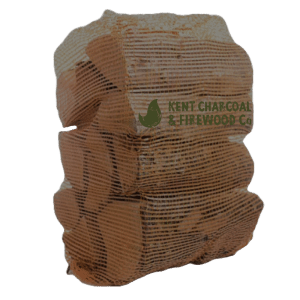Is Burning Wood Logs Bad for the Environment?

Introduction
Wood logs have long been a popular choice for heating homes, enhancing barbecues, and creating a warm, inviting ambience. The crackling sound and comforting glow of a wood fire evoke a sense of nostalgia and connection to nature that many find appealing. However, as the demand for wood logs continues to rise, it is crucial to examine the environmental implications of this practice. Understanding the impact of burning wood on our planet can help consumers make informed choices that balance enjoyment with sustainability.
The Carbon Footprint of Burning Wood
Carbon Dioxide Emissions
When wood is burned, it releases carbon dioxide (CO2) into the atmosphere, a greenhouse gas that significantly contributes to climate change. As trees grow, they absorb CO2 from the air, storing carbon in their biomass. However, when these trees are cut down and burned, the stored carbon is released back into the atmosphere. This cycle raises concerns about the overall carbon footprint associated with using wood as an energy source.
In comparison to fossil fuels, burning wood can produce varying levels of CO2 emissions per unit of energy generated. While fossil fuels like coal and natural gas release higher amounts of CO2 when combusted, wood burning can still contribute significantly to greenhouse gas emissions if not managed properly. The efficiency of the burning process and the type of wood used play critical roles in determining the net carbon emissions associated with wood burning.
Carbon Neutrality Debate
The concept of carbon neutrality is central to discussions about burning sustainably sourced wood. Proponents argue that as long as wood is harvested responsibly and replaced through replanting efforts, it can be considered a carbon-neutral energy source. This perspective hinges on the idea that the CO2 released during combustion is offset by the CO2 absorbed by new trees as they grow.
However, achieving true carbon neutrality requires careful forest management practices. Unsustainable logging can lead to deforestation, which disrupts this balance by removing trees faster than they can be replanted. Additionally, factors such as soil health and biodiversity must be considered; healthy forests are more resilient and better able to sequester carbon over time.
Therefore, while sustainably sourced wood has the potential to be a more environmentally friendly option compared to fossil fuels, it is essential to ensure that forestry practices support long-term ecological health and sustainability.
The Ready to Burn Scheme
The Ready to Burn scheme is a government-backed initiative designed to promote the use of dry, seasoned firewood for domestic burning. Launched in England on 1st May 2021, this scheme aims to improve air quality by ensuring that the wood sold for burning has a moisture content of less than 20%. This is crucial because burning wet wood not only produces significantly more smoke and harmful pollutants but also results in lower heating efficiency.
Objectives of the Ready to Burn Scheme
- Promotion of Dry Wood: The scheme encourages consumers to choose firewood that is certified as “Ready to Burn.” This certification indicates that the wood has been properly dried and is suitable for immediate use, providing a cleaner and more efficient burn.
- Reduction of Air Pollution: By banning the sale of wet wood and other high-polluting fuels, the scheme aims to reduce harmful emissions from domestic burning. This is particularly important in urban areas where air quality can be severely affected by particulate matter from wood burning.
Certification Process
Wood that meets the Ready to Burn standards is certified by Woodsure, a trusted non-profit organisation. The certification process involves independent testing to ensure that the wood meets strict quality control parameters. Consumers can easily identify certified fuels by looking for the Ready to Burn logo on the packaging.
Benefits of Using Ready-to-Burn Firewood
- Improved Air Quality: Burning dry wood can reduce smoke emissions by up to 85% compared to burning wet wood. This significant reduction in pollutants contributes to cleaner air for both users and their neighbours.
- Enhanced Heating Efficiency: Dry wood burns hotter and more efficiently, meaning that users can enjoy a brighter fire with less effort in sourcing additional fuel.
- Compliance with Regulations: With new smoke control areas being established across the UK, using Ready to Burn certified wood ensures compliance with government regulations aimed at improving air quality.
-

Kiln Dried Hardwood Logs Bulk Bags
£169.00 – £299.00 Select options This product has multiple variants. The options may be chosen on the product page -

Wood Burner Dry Logs Bulk Bags
£154.00 – £269.00 Select options This product has multiple variants. The options may be chosen on the product page -

Kiln Dried Hardwood Logs
£24.99 – £259.00 Select options This product has multiple variants. The options may be chosen on the product page -

Wood Burner Logs
£22.00 – £249.00 Select options This product has multiple variants. The options may be chosen on the product page

Air Quality and Health Impacts
Air Pollution from Wood Burning vs Coal
While both wood burning and coal combustion release harmful pollutants, there are important distinctions to consider. Wood burning produces a range of pollutants, including particulate matter (PM2.5), carbon monoxide (CO), and volatile organic compounds (VOCs). However, when compared to coal, wood can offer certain advantages if sourced and burned responsibly.
- Particulate Matter (PM2.5): Both wood and coal combustion release PM2.5, which poses serious health risks. However, coal is often associated with higher levels of sulphur dioxide (SO2) and nitrogen oxides (NOx), which can lead to acid rain and further air quality degradation.
- Carbon Monoxide (CO): While wood burning emits CO, coal combustion typically releases higher amounts due to its more complex chemical composition. This makes wood a potentially less harmful option when considering indoor air quality.
- Volatile Organic Compounds (VOCs): Wood burning does produce VOCs, but coal combustion can emit additional carcinogenic compounds that are not present in wood smoke.
Health Risks Associated with Air Pollution
The health risks associated with air pollution from both wood and coal are significant. Exposure to PM2.5 can lead to respiratory problems, cardiovascular diseases, and other serious health issues. However, the public perception of wood burning as a more “natural” alternative often leads to a preference for it over coal.
- Respiratory Problems: While both fuels contribute to respiratory issues, studies indicate that the emissions from burning dry, kiln-dried wood can be significantly lower than those from burning coal. This is especially true when using modern wood-burning appliances designed for efficiency.
- Cardiovascular Diseases: Both forms of combustion can exacerbate heart conditions; however, the particulate emissions from coal are often more harmful due to their chemical composition.
Inefficient Burning Practices
The efficiency of burning practices is crucial in determining the environmental impact of wood burning.
- Impact of Burning Wet or Improperly Seasoned Wood: Burning wet or improperly seasoned wood leads to higher emissions of harmful pollutants. In contrast, using well-seasoned or kiln-dried logs significantly reduces smoke output and enhances combustion efficiency.
- Importance of Using Kiln-Dried Logs: Kiln-dried logs have a moisture content below 20%, allowing for cleaner combustion. This results in fewer emissions compared to both wet wood and coal, making it a preferable choice for environmentally conscious consumers.
Environmental Consequences for Wood vs Coal
Deforestation and Ecosystem Damage
While both wood and coal extraction can lead to environmental degradation, the impacts differ significantly based on sourcing practices.
- Deforestation: Unsustainable logging practices can lead to deforestation and biodiversity loss when sourcing firewood. However, responsible forestry management—such as replanting initiatives—can mitigate these effects. In contrast, coal mining often results in extensive land degradation and habitat destruction that can take decades or longer to recover.
- Ecosystem Effects: Healthy forests play a vital role in carbon sequestration; thus, sustainable wood harvesting practices can support ecological balance when managed correctly.
Short-Lived Climate Pollutants
Both wood burning and coal combustion release short-lived climate pollutants like black carbon and methane.
- Particulate emissions: Wood burning is a significant source of particulate emissions; however, coal combustion also contributes substantially to this issue. The impact of particulate emissions on climate change is profound; yet, sustainable forestry practices can help offset some emissions associated with wood use.
- Methane Emissions: Methane is emitted during incomplete combustion of both fuels. However, with proper techniques and equipment, methane emissions from wood can be reduced more effectively than those from coal.

Sustainable Practices for Wood Burning
Choosing Sustainable Sources
To ensure that wood burning remains an environmentally friendly option:
- Certified Sustainable Forestry Practices: Opting for firewood from suppliers who adhere to sustainable forestry practices.
Proper Seasoning and Storage
Properly seasoning firewood is essential:
- Benefits of Seasoning: Well-seasoned firewood burns more efficiently and produces fewer emissions compared to wet or green wood. This practice not only enhances heating efficiency but also reduces environmental impact.
Efficient Equipment Use
Utilising modern equipment can greatly minimise emissions:
- Recommendations for Appliances: Investing in EPA-certified stoves or fireplaces designed for efficient burning helps reduce air pollution while maximising heat output. Regular maintenance ensures optimal performance and safety.
Conclusion
In summary, while both wood logs and coal have environmental impacts associated with their combustion, wood burning offers a more sustainable alternative when sourced and used responsibly. The emissions from burning wood can be significantly reduced by using properly seasoned firewood, such as that certified under the Ready to Burn scheme, which ensures a moisture content of less than 20%. This not only lowers harmful pollutants like particulate matter and carbon monoxide but also enhances heating efficiency.
Conversely, coal combustion typically results in higher emissions of sulphur dioxide and nitrogen oxides, contributing to air quality degradation and long-term environmental damage. The ecological consequences of coal mining, including habitat destruction and increased greenhouse gas emissions, further underscore the advantages of choosing wood as a fuel source.
By opting for sustainably sourced wood logs, consumers can enjoy the warmth and ambience of a wood fire while minimising their environmental footprint.
Ignite Your Fire Responsibly with Kent Charcoal & Firewood Ltd!
At Kent Charcoal & Firewood Ltd, we are committed to providing high-quality firewood sourced exclusively from sustainable practices. All our wood is certified as Ready to Burn, ensuring that you can enjoy a cleaner, more efficient burn with minimal environmental impact. Choose Kent Charcoal & Firewood Ltd for your firewood needs and contribute to a healthier planet while enjoying the comfort of a warm fire.
Visit our website today to explore our range of sustainable firewood options!